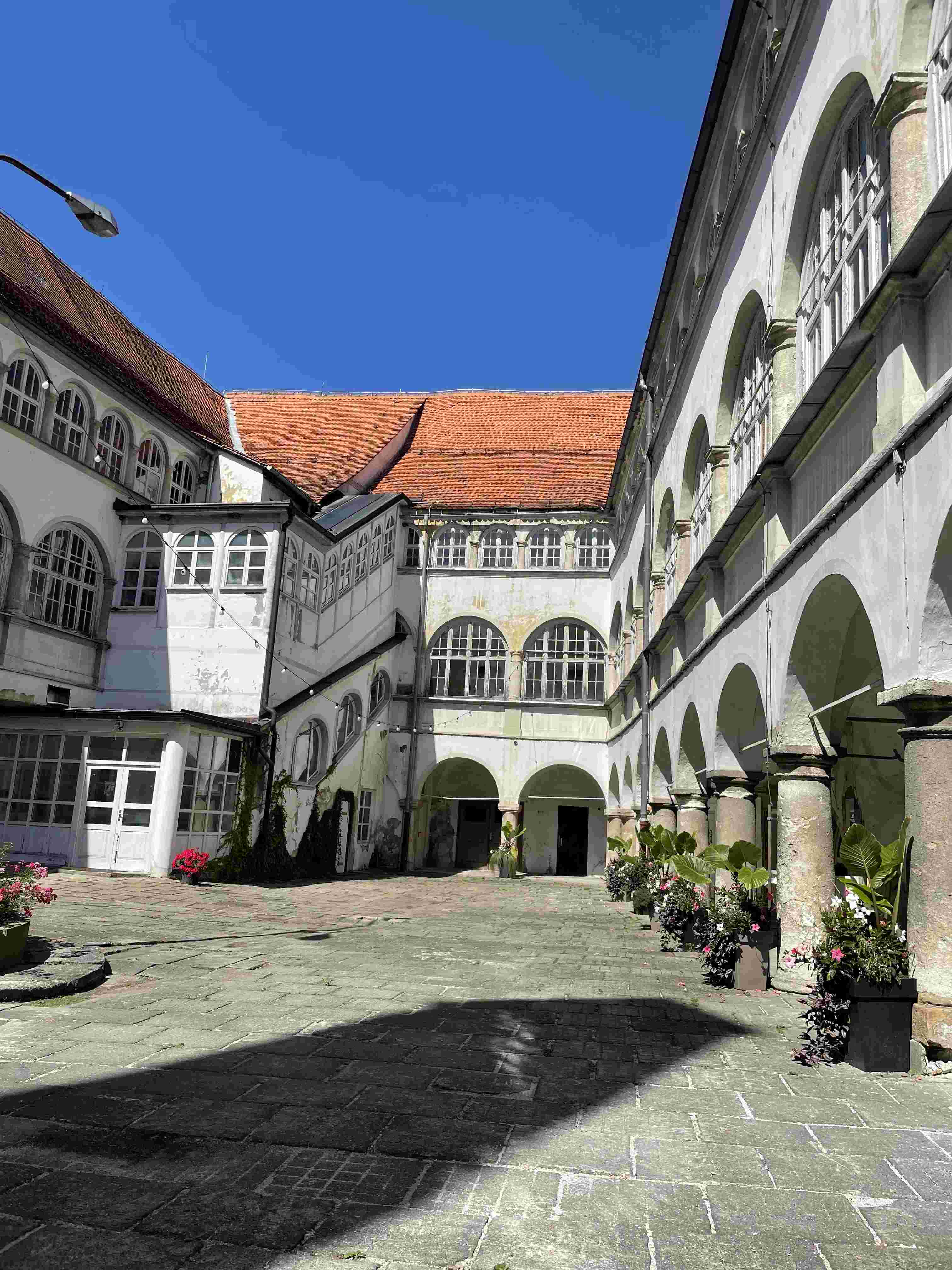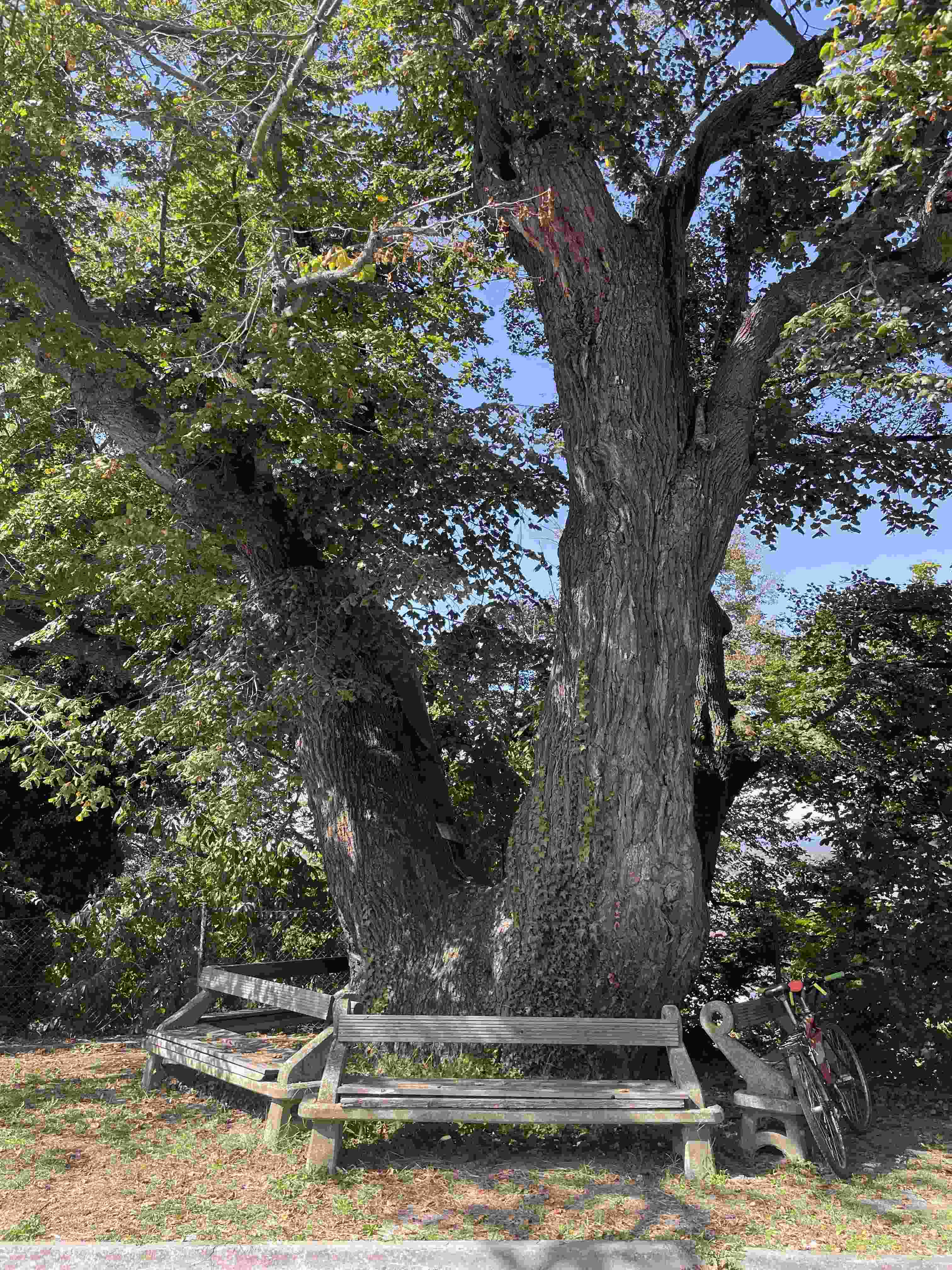very brief musing on the lack of public digital writing
It's been a long while since my regular writing. I'm aware that the photography exhibition, back in the middle of August, already felt like a closure to this stay in Slovenia. Because just after we had the political ecology week; and after that, I stayed at the farm for three nights before heading into Berlin. Today is Saturday; I arrived last Tuesday, and the days have been very packed.
There's the need to document and comment on what has happened in the meantime, and I feel an appropriate strategy would be to look at my phone pictures and try to make sense of my memories. That's a plan for the coming days.
a visit to the Museum of Madness
Today, though – today we went to the Museum of Madness. We have been aware of it ever since the beginning of our stay, as Simon Chang had done work over there (which partly materialised in a zine); we knew the museum was somehow related to mental health, having been something like a psychiatric hospital, or asylum, some years ago. Its name suggested we would experience related to madness, which I found intriguing.
Our guide, Barbara, led us through some of the history of the building and its purpose. The institution is no longer functioning, and at the time of the decision it was agreed that other mental institutions scattered throughout Slovenia would also cease their activity – but this did not happen. To the castle were sent not only the mentally ill, but also those who had fallen from grace in a political or even familiar standing, and she recounted many examples of people that got bureaucratically stuck in these premises, akin to prisoners, who could not, year after year, find a place to stay in the world outside the institution. We got a sense for the clear, overarching intention of raising awareness for the struggle of this vulnerable population.
We were, then, led through the building – a castle, if I recall correctly, that dates from around the 10th or 11th century, with direct intervention from some Renaissance artists later in its history – and the many exhibitions in place, not without providing some context into what the institution had stood for back in the day. ; the building dates back to medieval times, but it functioned as such between the aftermath of the Second World War and 2004 (yes – 2004!).
The visit had some intense moments. Throughout our walk in the many rooms and corridors, we spotted the weird sight of ball pits. It's very difficult to understand why there were two of these in the asylum – I just assumed they were leftover artifacts from some prior events with children, as they looked really out of place among the somber presence of the medical beds. It happened, however, that some patients (if the term can even be applied in such a grim context) would get a tranquilizing shot and put laid down inside the pit; the physical and mental drowsiness, along with the difficult ball pit terrain, usually made for three or four hours of struggle before they could get out of the pit.
The Museum of Madness tells the story of many, many unheard voices, whose story is being assembled by interviews with previous workers, patients and related family, and through the interpretation of found objects. Its halls and rooms are still a profound source of trauma for everybody involved. It was not a pleasant visit, but definitely an interesting one.


note on the ride to the museum
The way to the museum was done by bike, on a short, albeit very hilly, 14km asphalt route. The museum is very close to the border with Austria, naturally represented by the Mura river.
It's a fun ride. At the 4.5km mark (if considering the direction Jurovski Dol -> Grad Cmurek), there's a big downhill and an uphill immediately after. On the way back, I intentionally tried to climb with the momentum generated from the downhill (max speed 54km/h), and was successful in climbing half of the hill.

The aforementioned valley; Paula is also in the picture, sweating her way up the hill.
and I did some great buckwheat for dinner, too
In the evening, I cooked some buckwheat. So far, I suppose I always overcooked it: I usually boil the grains in plenty of water, until very soft. This time, however, I stopped the cooking process earlier (it still retained some crunch and texture), and set it aside.
On another pan, I cooked some onion, carrot, and snap peas on high heat, to which I added some powdered ginger (we no longer have a reliable supply of fresh and biological), honey and soy sauce. The strong added flavour would do well in the final mixture with the buckwheat.
After serving, I noticed the whole dish was somewhat dry and lacking a final touch; this was readily solved with a sparkle of apple vinegar.
As a whole, it felt like one of the nicest, most well-rounded dishes I've cooked in the farm. One of the five best, I'd say.